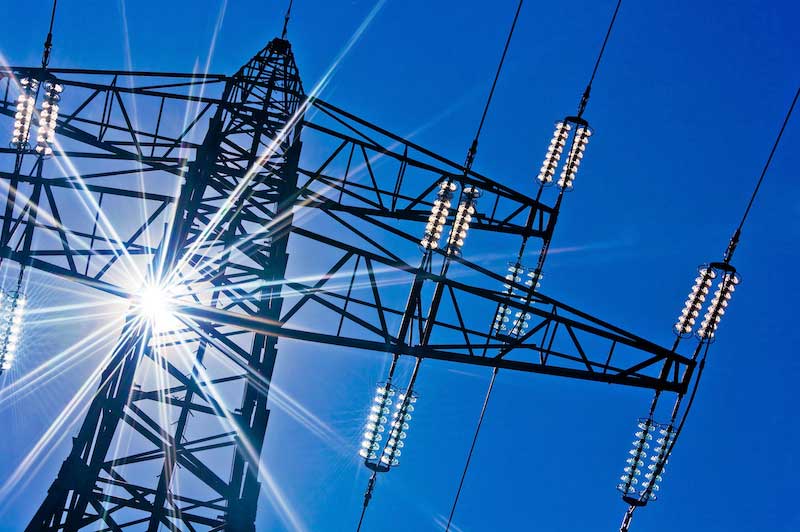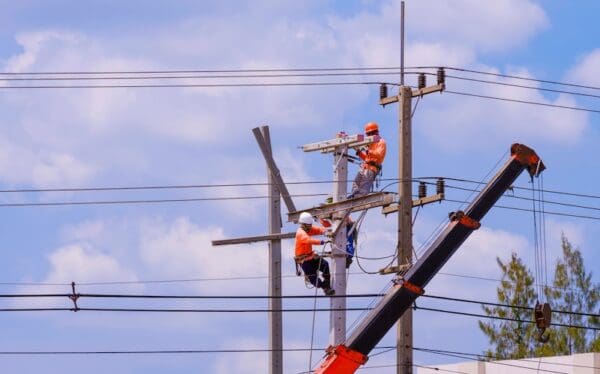
It's never easy to deal with electricity price increases – but there's a way to keep costs low. Photo: Shutterstock
This summer has gotten hot fast. And while I’ve been sweltering, I’ve also been worried about what my next electricity bill will look like every time I turn on the AC. Electricity rates in New England are some of the highest in the country and increasing quickly. The good news is that New England states are starting to consider ways to slow electricity price increases. As blistering heat waves become more common, we need all the tools in our toolbox to keep electricity prices affordable. Thankfully, the same tool can help us cut pollution and combat climate change.
How States Currently Set Electricity Prices
Electricity prices are set by state agencies. Historically, they have been based on how much money a company has put into providing electricity—things like fuel costs, wire maintenance, and facility upgrades. Those costs, plus some extra for the company’s profit, come right out of your pocket via your bills.
New England’s electricity grid is old, and the companies providing us power need to upgrade it—which is one of the reasons our electricity is so expensive. Replacing aging poles and wires, trimming trees, and updating other infrastructure isn’t cheap, but utilities need to spend the money to keep the grid reliable. These are costs they can pass on to the customer.
But under the current price-setting system, utilities are only incentivized to continue business as usual. They are not encouraged to reduce and shorten outages, improve customer service, or reduce carbon pollution because those improvements don’t boost their bottom line. Failing to provide these services doesn’t harm their bottom line either, which leaves us in a stalemate of status quo service. For example, unless helping people adopt cleaner technologies makes a utility more money, they won’t do it.
Without a pricing method fit for the 21st century, we’ll be left with an outdated, unreliable grid—and hefty electricity bills to match.
Thankfully, There Is a Better Way to Price Electricity
A new way to determine electricity prices can help. New Hampshire and Connecticut have been investigating a new policy solution called “performance-based ratemaking,” often shortened to PBR. This policy can stabilize electricity prices, support clean energy, and cut carbon pollution. For example, Illinois, Hawaii, and New York have designed rates to reward utilities for accelerating the clean energy transition, improving reliability, and benefiting those with limited means to afford their electricity bills.
Instead of tying the amount of money a utility makes to how much it puts in to providing electricity, a utility’s profit would be based on how well it performs at meeting particular goals, like reducing the length of power outages. Profits could also be tied to managing electricity use during peak load, improving customer service, shortening the time it takes to connect solar projects to the grid, and cutting carbon pollution.
This new method of setting electricity prices means that utility profits (and rate increases) are tied to targets like clean energy, fewer outages, and affordability—not just company investments and bottom lines. The plans last several years, with minor price adjustments annually. Some—like the Massachusetts Attorney General—oppose performance-based ratemaking due to the frequent rate increases. But prices are rising regardless, and it is better for customers to see them coming, have smaller, gradual hikes, and get better value from utility spending.
And because more money going in does not automatically mean more money is coming out, utilities are encouraged to save money where they can—and pass those savings on to their customers.
What Comes Next for Affordable Electricity Rates in New England?
The state agency charged with overseeing utilities in Connecticut has been investigating this policy solution for several years, and its final plan is expected this summer. New Hampshire’s utility overseers are also considering implementing performance-based ratemaking for Eversource, one of New Hampshire’s utilities.
CLF has advocated for these cost-saving proposals and will continue to support better ways to set electricity rates across New England. We’ll keep you posted on how you can get involved in ensuring utilities keep our best interests, like affordable, clean electricity, in mind.
Dillon Kelly is a University of Minnesota Law School student working as a CLF New Hampshire intern this summer.




